In 2011, Anders Langlands explained the work of MPC on Pirates of the Caribbean: On Stranger Tides. He went on to work on films like Man of Steel and The Martian. He joined Weta FX in 2016 and worked on projects like War for the Planet of the Apes and Zack Snyder’s Justice League.
Beck Veitch started her career in visual effects in 2004 at Rising Sun Pictures. She joined the teams of Weta FX in 2012 and her filmography includes films such as Batman Begins, Speed Racer, The Hobbit: The Battle of the Five Armies and Alita: Battle Angel.
Back in 2018, Dennis Yoo explained his work on Mortal Engines. He then went on to work on The Green Knight.
Where was filmed the various parts of the movie?
It was filmed mostly in the UK, both on various locations and on stage at Leavesden Studios.
Which location was the most complicate to create and why?
The Batcave was probably the more complex environment, especially getting the lighting working correctly and in keeping with DoP Greig Fraser’s style and hitting all the story points Director Matt Reeves wanted to get across in only a couple of shots. Plus, we had to add hundreds of bats!
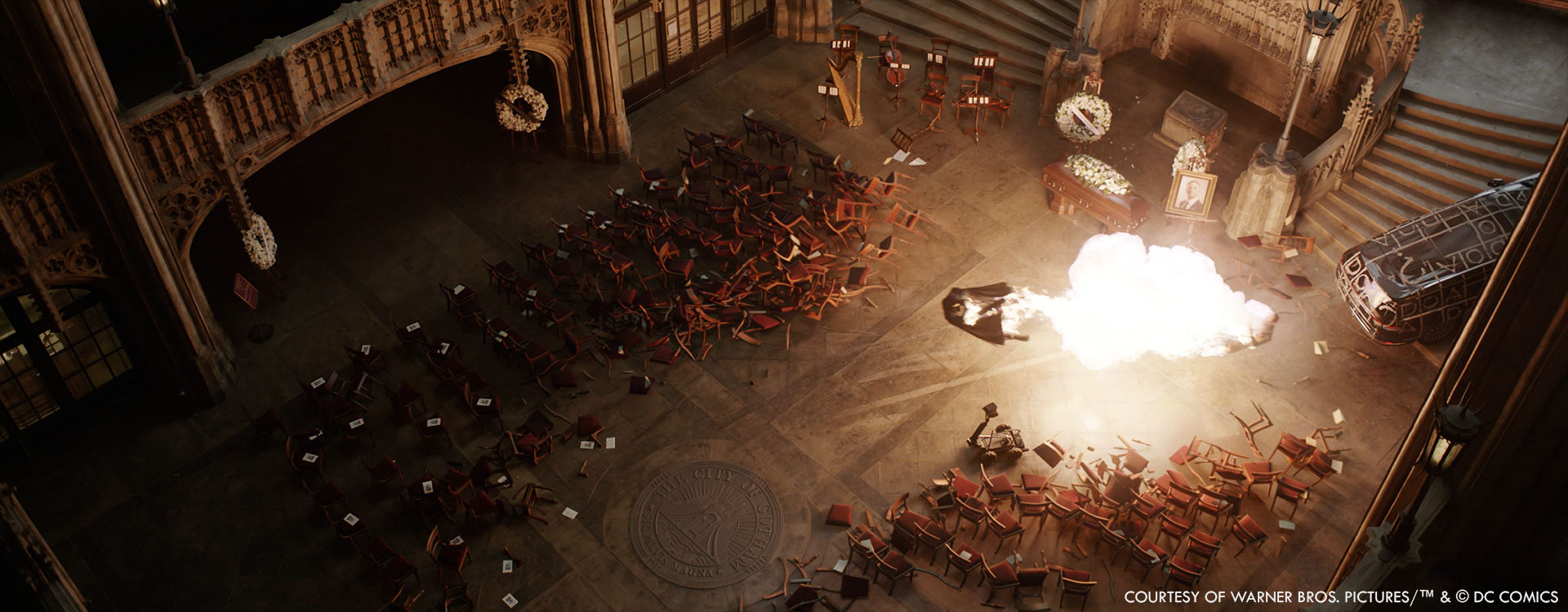
Can you explain in detail about the Batmobile creation?
They actually had four different practical Batmobiles for different types of shots, for example there was one with narrow tyres for drifting, and one with very springy suspension for landing the jumps. We had to replace the wheels in a couple of shots to make it match the hero Batmobile.
There is an impressive car chase sequence. What was your approach about it?
This sequence actually came to us pretty late in production. It was originally slated for another vendor but some of the work was switched around, so we had to get up to speed on the challenges pretty quickly. There were a bunch of challenges covering lots of different types of work, with each shot being its own little jigsaw puzzle.
For the shoot, production had dressed a half mile of runway at Dunsfold Aerodrome in the UK to look like a US highway. This included a fleet of 50-odd vehicles to create traffic that we’d need to extend on the other side of the road and in the background of a lot of shots.
Everything had been prevised by the filmmakers, and they set out to get a version of pretty much every shot. Even when we knew we’d be going fully digital with them later, they still shot something representative for each one. This was a huge help for animation, FX, lighting and optical reference.
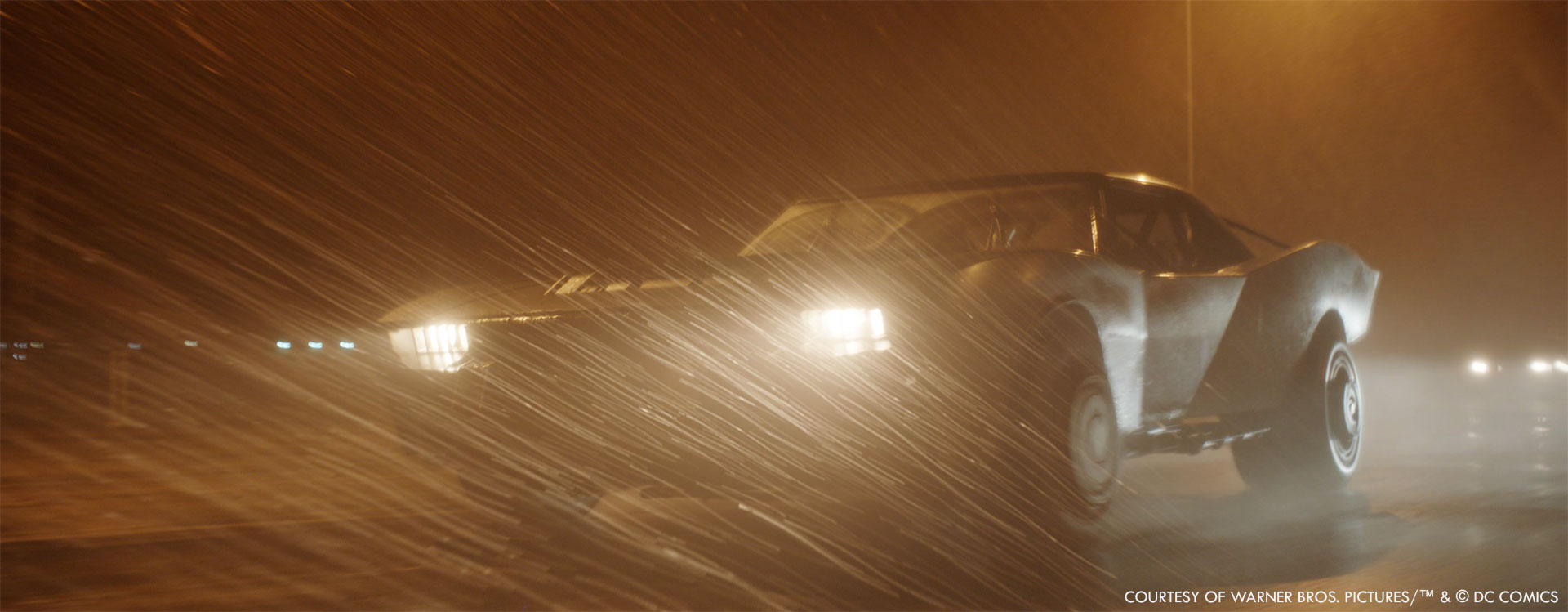
We worked alongside Matt on early versions of the cut, using postvis to plan out CG elements for the sequence. A couple of storytelling beats weren’t quite working for Matt, in particular the whole sequence of cause and effect that begins with Penguin slamming on his brakes and ultimately results in this huge explosion at the climax.
Our animation team, supervised by Dennis Yoo, did many iterations in postvis to polish the story. There was a constant back and forth with editorial as we supplied updated versions and they refined the cut.
For the scene’s climax, our FX team did a lot of complex destruction work in Houdini: for example, one truck hitting the overpass, another slamming into the central partition, and of course Penguin’s Maserati going flying and rolling.
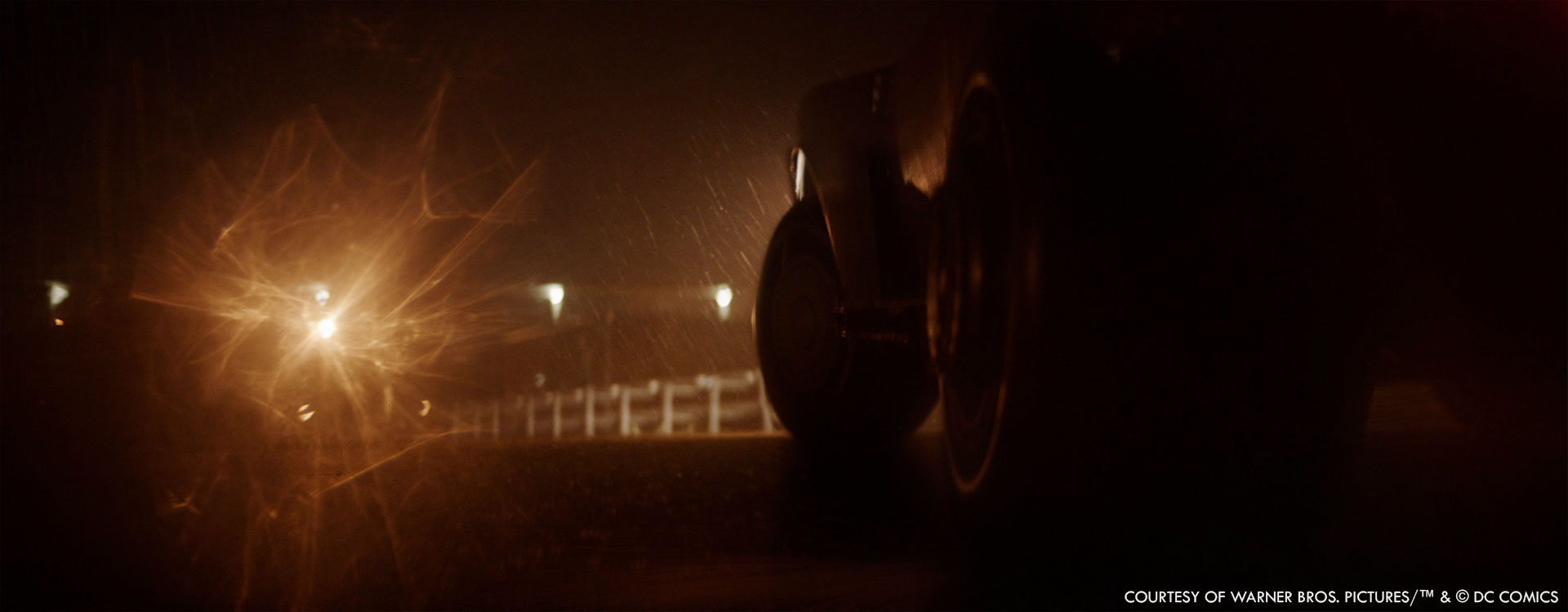
While this was the big, obvious stuff, we also augmented nearly every shot in the entire scene to add rain and other wet effects. The plates were mostly shot dry, so we added falling rain, mist, and spray from the vehicles’ wheels, as well as little splashes where the raindrops hit the ground and out-of-focus water droplets on the windshields for interior shots.
This was a key element of the scene for Matt and was the most challenging part of our work on the film. Rain is obviously present throughout the film, but it adds a whole extra level of danger to the highway chase. Creating a sense of the trucks hydroplaning was vital to setting off the rolling pile-up at the culmination of the scene, so we had to sell that they were in the pouring rain and it was dangerously wet out there, even though most of the shots were completely dry.
Our FX team simulated the falling rain in Houdini, and we used a custom-designed shader to mimic the light scattering from a falling, oscillating raindrop in order to get the distinctive, broken-up motion blur streaks of real rain.
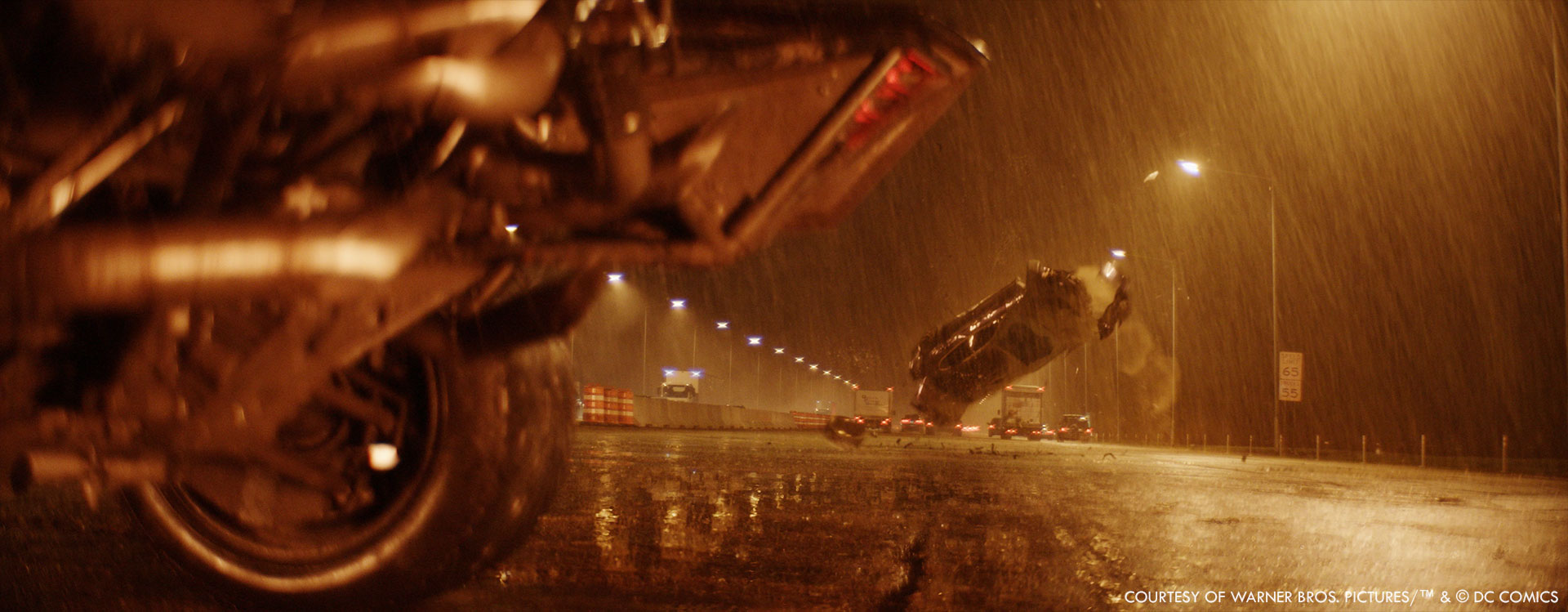
Did you want to reveal to us any other invisible effects?
Well, hopefully all of it is invisible! We did quite a lot of augmentation to the fight scenes, including face replacements to make Robert Pattinson’s stunt double, Rick English, look like Rob. We didn’t have time or budget for full facial animation, so we solved these with a mixture of painting and warping Rick’s face into Robs. For the really hard ones we ended up doing facial animation in comp: we rendered static 3D heads of Rob with different expressions tracked to Rick, then blended between these in 2D to animate the faces.
Which sequence or shot was the most challenging?
Definitely the chase! It was a very challenging scene, but the end result is thrilling and it was very rewarding to see it all come together.
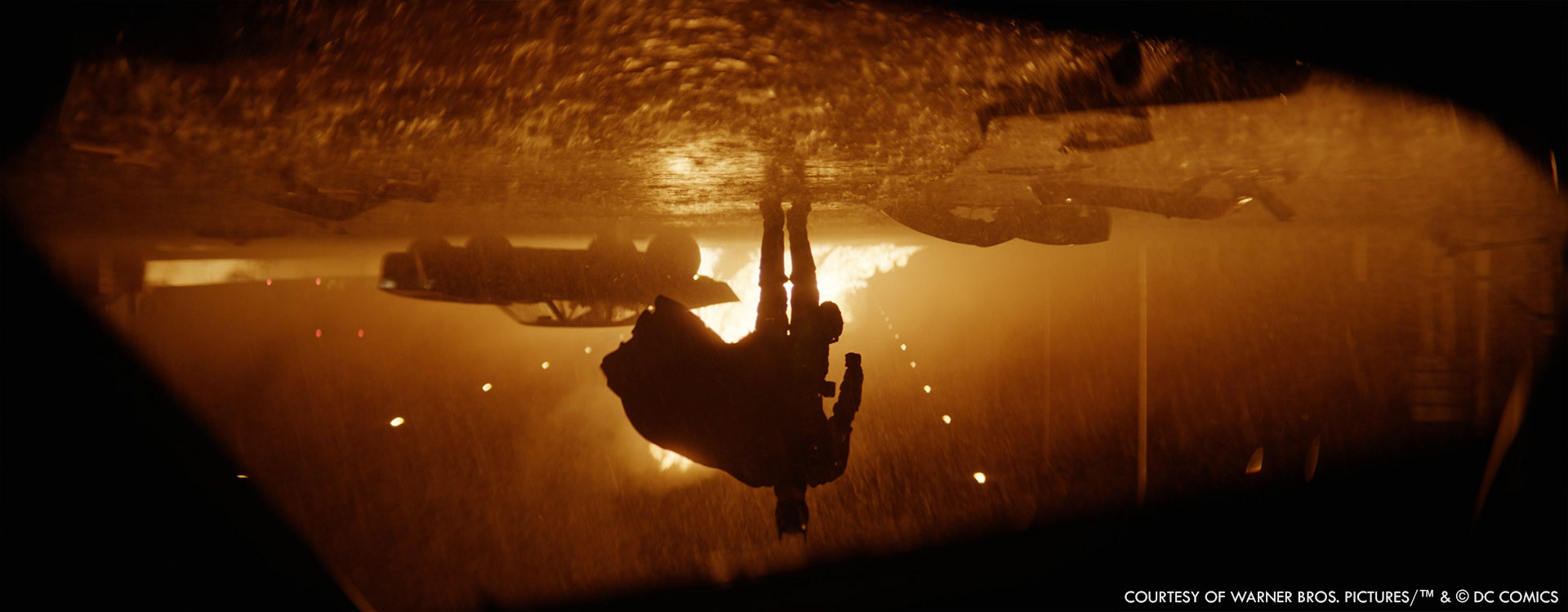
What is your favorite shot or sequence?
The chase!
How long have you worked on this show?
We first started discussions on it late 2019, then took a bit of a break because of covid, and picked it back up early 2021 for a December 2021 delivery.
What’s the VFX shots count?
320.
A big thanks for your time.
WANT TO KNOW MORE?
Weta FX: Dedicated page about The Batman on Weta FX website.
© Vincent Frei – The Art of VFX – 2022




